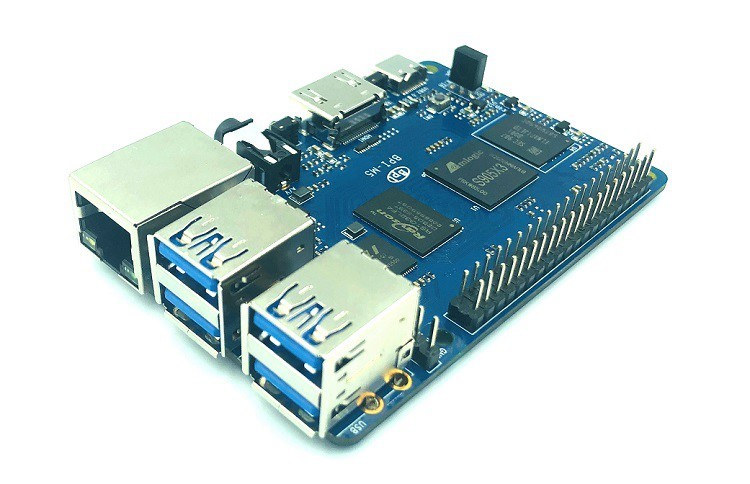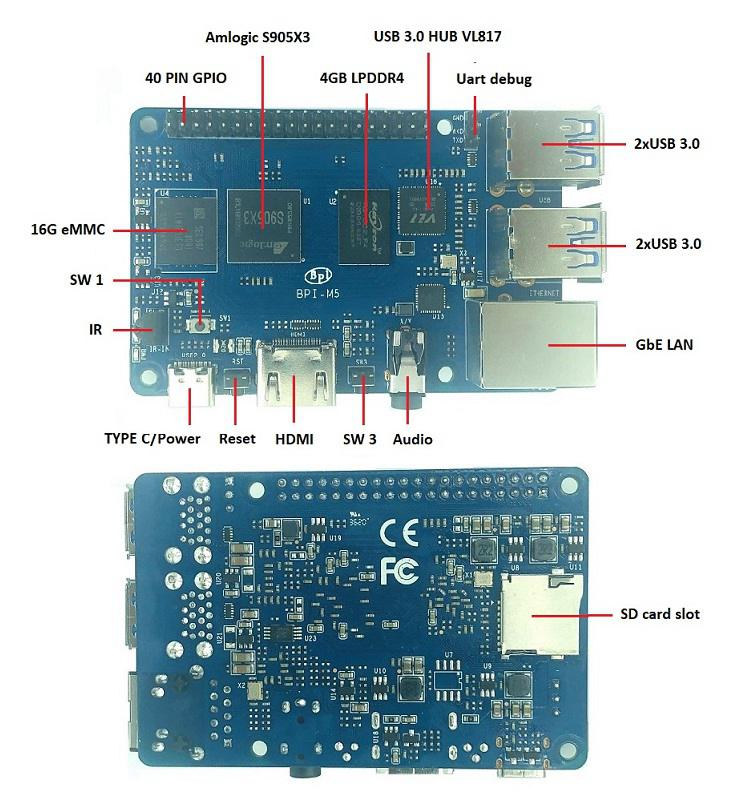Banana Pi BPI-M5 is an Amlogic S905X3 SBC following the Raspberry Pi form factor, and that is pretty similar to Hardkernel ODROID-C4 launched earlier this year with the same quad-core Cortex-A55 processor.
BPI-M5 comes with 4GB LPDDR4 RAM, 16GB eMMC flash, and offers four USB 3.0 ports, one Gigabit Ethernet port, and on HDMI 2.1 output port for 4K/8K video output.

- SoC – Amlogic S905X3 quad-core Cortex-A55 processor @ up to 2.0 GHz with
Mali-G31 MP2 GPU @ 650Mhz - System Memory – 4GB LPDDR4
- Storage – 16GB eMMC flash (option up to 64GB), MicroSD slot up to 2TB
- Video Output – HDMI 2.1 up to 4Kp60 with HDR, CEC, EDID
- Audio – 3.5mm audio jack, digital HDMI audio
- Connectivity – Gigabit Ethernet
- USB – 4x USB 3.0 ports via VL817 hub controller, 1x USB-C port (for power only?)
- Expansion – 40-pin Raspberry Pi header with 28x GPIO, UART, I2C, SPI, PWM, and power signal (+5V, +3.3V, GND).
- Debugging – 3-pin debug header
- Misc – Reset, Power, and U-boot button; power and activity LED’s; IR receiver
- Power Supply – 5V @3A via USB Type-C port
- Dimensions – 92x60mm (Not the same as Raspberry Pi PCB size, but they probably included the connectors during measurement)
- Weight – 48grams

here’s also a single LPDDR4 chip on the board meaning single-channel memory, and very likely lower memory bandwidth than the dual-channel configuration used on the Hardkernel board.
The company says it will provide Android and Linux images, as well as source code. Banana Pi BPI-M2 SBC is now sold for $53 on Aliexpress. This is a tough sell against ODROID-C4 since Hardkernel’s software support and community have so far been much better than what Banana Pi has to offer. Another alternative is Khadas VIM3L development board powered by a similar Amlogic S905D3 SoC.
The company should eventually provide more details in the Wiki.

Jean-Luc started CNX Software in 2010 as a part-time endeavor, before quitting his job as a software engineering manager, and starting to write daily news, and reviews full time later in 2011.
Support CNX Software! Donate via cryptocurrencies, become a Patron on Patreon, or purchase goods on Amazon or Aliexpress




